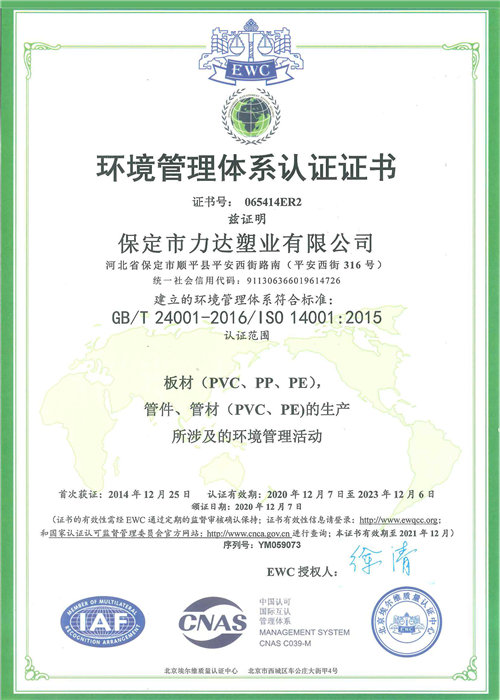Sep . 21, 2024 20:04 Back to list
pvc pipe fittings
Understanding PVC Pipe Fittings A Comprehensive Guide
PVC (Polyvinyl Chloride) pipe fittings are essential components in plumbing, irrigation, and various industrial applications. Their durability, affordability, and resistance to corrosion make them a popular choice among contractors and DIY enthusiasts alike. This article explores the types, uses, and advantages of PVC pipe fittings, providing valuable insights for anyone considering their application.
Types of PVC Pipe Fittings
PVC fittings come in a variety of shapes and sizes, allowing for a wide range of configurations in plumbing systems. Some common types include
1. Elbows These fittings change the direction of the pipe either at a 90° or 45° angle, facilitating the flow of water in a desired direction.
2. Tees Shaped like the letter T, these fittings allow for the connection of three pipes and are commonly used to create branch lines in a plumbing system.
4. Caps and Plugs Caps are used to seal the end of a pipe, while plugs serve to close off a fitting, both preventing flow in the designated area.
pvc pipe fittings

5. Reducers These fittings allow for a transition between pipes of different diameters, ensuring a smooth flow of water from a larger pipe to a smaller one.
Applications of PVC Pipe Fittings
PVC pipe fittings are widely used in various applications, such as residential plumbing, irrigation systems, and industrial processes. In residential settings, these fittings are often found in drainage systems, water supply lines, and sewer systems. In agricultural applications, they are crucial for efficient irrigation systems, ensuring that crops receive the necessary water supply. Additionally, in industrial settings, PVC fittings are commonly used for chemical processing due to their resistance to corrosive substances.
Advantages of PVC Pipe Fittings
One of the primary benefits of PVC pipe fittings is their longevity. Unlike metal fittings, which can corrode over time, PVC is immune to rust and degradation from moisture, significantly extending the lifespan of plumbing systems. Additionally, PVC fittings are lightweight, making them easier to transport and install. Their cost-effectiveness is another appealing factor; overall, they present a lower initial investment compared to alternatives like copper or stainless steel.
Furthermore, PVC is a versatile material that can be manufactured in various sizes and configurations to suit specific needs. Their smooth interior surfaces allow for improved flow rates and reduced friction, which can be beneficial in maintaining water pressure.
Conclusion
In summary, PVC pipe fittings offer an innovative solution for a multitude of plumbing and irrigation needs. Their diverse range of types, practical applications, and distinct advantages make them a preferred choice for both professionals and hobbyists. Whether you're planning a new plumbing project or upgrading an existing system, understanding the role of PVC pipe fittings is crucial to achieving a functional and efficient outcome. As technology progresses and new materials emerge, PVC fittings continue to stand the test of time, proving to be a reliable option in a variety of settings.
-
Durable PP Rigid Sheet: Lightweight, Chemical Resistant Solutions
NewsAug.21,2025
-
PVC Grey Sheet for Extraction: Chemical Resistant & Durable
NewsAug.19,2025
-
Durable PVC Pipe Fittings for Plumbing & Irrigation Needs
NewsAug.18,2025
-
HDPE Steel Belt Reinforced Spiral Corrugated Pipe | High Strength
NewsAug.17,2025
-
HDPE Pipe Fittings: Durable, Leak-Proof Solutions
NewsAug.16,2025
-
Premium CPVC Sheet: High-Temp & Chemical Resistant Solutions
NewsAug.15,2025

